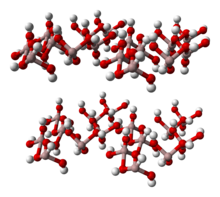Neonatal jaundice နဲ႔ စိတ္ဝင္စားဖြယ္ရာအခ်က္မ်ား
သတိမထားမိေလာက္တဲ့အခ်က္ေတြခ်ည္း စုၿပီး ေရးေပးထားပါတယ္။ Paediatrics (Child Health) ကို စထိေတြ႕မယ့္ FP1 ေတြေရာ FP2 ကေလးေတြပါ အက်ိဳးရွိပါလိမ့္မယ္။ အခ်င္းခ်င္း share ေပးၾကပါဦးေနာ္။ ;-)
;-)
သတိမထားမိေလာက္တဲ့အခ်က္ေတြခ်ည္း စုၿပီး ေရးေပးထားပါတယ္။ Paediatrics (Child Health) ကို စထိေတြ႕မယ့္ FP1 ေတြေရာ FP2 ကေလးေတြပါ အက်ိဳးရွိပါလိမ့္မယ္။ အခ်င္းခ်င္း share ေပးၾကပါဦးေနာ္။
RBC breakdown က ထြက္လာတဲ့ hemobogin ထဲက heme ကို heme oxygenase (HO) ကျဖိဳခြဲမယ္ biliverdin အဲကေန bilirubin ဆက္ျဖစ္မယ္။
Total bilirubin (TB) ကို ေသြးထဲမွာ ပံုစံ၄မ်ိဳးနဲ႔ေတြ႕ရပါတယ္...
1. unconjugated bilirubin (UC) bound to albumin
2. free or unbound bilirubin
3. conjugated bilirubin
4. conjugated bilirubin bound to albumin (δ-bilirubin)
Albumin-bound UC က အမ်ားဆံုးပါ sick or preterm newborn ေတြမွာ albumin က concentration ေရာ binding affinity ပါက်လို႔ UC တက္လာဖို႔ အႏၱရာယ္ပိုမ်ားပါတယ္။
1. unconjugated bilirubin (UC) bound to albumin
2. free or unbound bilirubin
3. conjugated bilirubin
4. conjugated bilirubin bound to albumin (δ-bilirubin)
Albumin-bound UC က အမ်ားဆံုးပါ sick or preterm newborn ေတြမွာ albumin က concentration ေရာ binding affinity ပါက်လို႔ UC တက္လာဖို႔ အႏၱရာယ္ပိုမ်ားပါတယ္။
ေသြးထဲက bilirubin ေတြကို liver ထဲပို႔... conjugate လုပ္ (UDP-glucuronyl transferase/UGT လို UGT မပါလာရင္ UC တက္ Crigler-Najjar $ လို႔ ေခၚပါတယ္)... bile ထဲ secrete လုပ္ တစ္ခ်ိဳ႕ေသာ conjugated bilirubin က enteric mucosal enzyme β-glucuronidase ေၾကာင့္ UC ျပန္ျဖစ္ အူကေန liver ဆီျပန္စုပ္သြားျပန္တယ္ (enterohepatic circulation/EHC) newborn မွာက gut flora မရွိေသးတာမို႔ conjugated bilirubin ကို urobilinogen ျဖစ္ေအာင္ reduce လုပ္တာ နည္းပါေသးတယ္... အဲဒီထဲမွာ hepatic uptake နဲ႔ conjugation က newborn မွာ ခက္ခဲေနပါေသးတယ္... ဒီေတာ့ အေၾကာင္းတစ္ခုခုေၾကာင့္သာ hemolysis မ်ားေနရင္ bottleneck effect နဲ႔ UC ေတြမ်ားေနမယ္... သူသာ albumin-binding capacity ေက်ာ္သြားရင္ free UC ေတြမ်ားလာၿပီး brain ဆီေရာက္ lipid-soluble မို႔ kernicterus ဝင္ႏိုင္။
ေမြးၿပီး ၁ပတ္ေလာက္အတြင္း ႏို႔ေကာင္းေကာင္းမဝင္ရင္ relative starvation ျဖစ္ delayed meconium pass ျဖစ္ bilirubin ကို EHC နဲ႔ ျပန္စုပ္သြားၿပီး ဝါႏိုင္တယ္ ဒါကို breastfeeding jaundice လို႔ အေခၚၾကတယ္ တစ္ကယ္က breastfeeding failure jaundice လို႔ေခၚရင္ ပိုမွန္မယ္ (ဒီ principle က လူႀကီးမွာလည္း ရွိတယ္ >24 h ေလာက္ ငတ္ေနရင္ လူႀကီးလည္း နည္းနည္းဝါႏိုင္တယ္ starvation jaundice လို႔ေခၚပါတယ္တဲ့)။ ဒီလိုမဝါေအာင္ ေမြးၿပီးစရက္ေတြမွာ ႏို႔ေသခ်ာတိုက္ဖို႔လိုမယ္ တစ္ေန႔ကို ၈ႀကိမ္ကေန ၁၂ႀကိမ္ေလာက္အထိေပါ့။
ႏို႔ပိုဝင္လာတဲ့ ေမြးၿပီး ၃ရက္ ၅ရက္ေလာက္က် အေမ့ႏို႔ထဲပါတဲ့ Pregnane-3-α,20-β-diol နဲ႔ nonesterified long-chain fatty acids က UGT ကို ပိတ္လို႔ UC တက္တတ္ျပန္ အေမ့ႏို႔ထဲလည္း β-glucuronidase ပါတတ္ၿပီး သူ႔ေၾကာင့္လည္း EHC နဲ႔ UC တက္ျပန္ ဒါကိုက် breast milk jaundice လို႔ေခၚတယ္ ကေလး ၃ပတ္ကေန လပိုင္းအထိ ၾကာေနႏိုင္တယ္ ေသခ်ာခ်င္ရင္ အေမႏို႔ ၁ရက္၂ရက္ေလာက္ျဖတ္ၾကည့္လိုက္ၿပီး formula feeding ေပးရင္ UC တစ္ဝက္ေလာက္အထိ ျပဳတ္က်သြားပါတယ္ သို႔ေသာ္ ဒီလိုႏို႔ျဖတ္တာက breastfeeding ကို ျပႆနာေပးႏိုင္လို႔ သိပ္မလုပ္ခ်င္ၾကဘူး ဒါဆို အျခား prolonged neonatal jaundice causes ေတြကို exclude လုပ္ၿပီး diagnose လုပ္လို႔ရတယ္ (hypothyroid, UTI စသည္ေပါ့) ကေလးကလည္း က်န္တာအကုန္ေကာင္းေနရမွာေပါ့။
EHC ကို ပိတ္ႏိုင္ရင္လည္း UC က်ဖို႔ရွိတယ္ orlistat ကို အဲဒီလိုသံုးႏိုင္ပါတယ္တဲ့ သူက fecal fat excretion မ်ားလာေစေတာ့ bilirubin လည္း ပါသြားမယ္ေပါ့ (UC က lipid soluble ကိုး)။ β-glucuronidase ကိုပိတ္ႏိုင္ေသာ L-aspartic acid or casein လည္း ေပးလို႔ရတယ္တဲ့။ Adsorbent ျဖစ္တဲ့ activated charcoal လည္း ေပးႏိုင္ပါတယ္။
ေမြးၿပီး ၁ပတ္ေလာက္အတြင္း ႏို႔ေကာင္းေကာင္းမဝင္ရင္ relative starvation ျဖစ္ delayed meconium pass ျဖစ္ bilirubin ကို EHC နဲ႔ ျပန္စုပ္သြားၿပီး ဝါႏိုင္တယ္ ဒါကို breastfeeding jaundice လို႔ အေခၚၾကတယ္ တစ္ကယ္က breastfeeding failure jaundice လို႔ေခၚရင္ ပိုမွန္မယ္ (ဒီ principle က လူႀကီးမွာလည္း ရွိတယ္ >24 h ေလာက္ ငတ္ေနရင္ လူႀကီးလည္း နည္းနည္းဝါႏိုင္တယ္ starvation jaundice လို႔ေခၚပါတယ္တဲ့)။ ဒီလိုမဝါေအာင္ ေမြးၿပီးစရက္ေတြမွာ ႏို႔ေသခ်ာတိုက္ဖို႔လိုမယ္ တစ္ေန႔ကို ၈ႀကိမ္ကေန ၁၂ႀကိမ္ေလာက္အထိေပါ့။
ႏို႔ပိုဝင္လာတဲ့ ေမြးၿပီး ၃ရက္ ၅ရက္ေလာက္က် အေမ့ႏို႔ထဲပါတဲ့ Pregnane-3-α,20-β-diol နဲ႔ nonesterified long-chain fatty acids က UGT ကို ပိတ္လို႔ UC တက္တတ္ျပန္ အေမ့ႏို႔ထဲလည္း β-glucuronidase ပါတတ္ၿပီး သူ႔ေၾကာင့္လည္း EHC နဲ႔ UC တက္ျပန္ ဒါကိုက် breast milk jaundice လို႔ေခၚတယ္ ကေလး ၃ပတ္ကေန လပိုင္းအထိ ၾကာေနႏိုင္တယ္ ေသခ်ာခ်င္ရင္ အေမႏို႔ ၁ရက္၂ရက္ေလာက္ျဖတ္ၾကည့္လိုက္ၿပီး formula feeding ေပးရင္ UC တစ္ဝက္ေလာက္အထိ ျပဳတ္က်သြားပါတယ္ သို႔ေသာ္ ဒီလိုႏို႔ျဖတ္တာက breastfeeding ကို ျပႆနာေပးႏိုင္လို႔ သိပ္မလုပ္ခ်င္ၾကဘူး ဒါဆို အျခား prolonged neonatal jaundice causes ေတြကို exclude လုပ္ၿပီး diagnose လုပ္လို႔ရတယ္ (hypothyroid, UTI စသည္ေပါ့) ကေလးကလည္း က်န္တာအကုန္ေကာင္းေနရမွာေပါ့။
EHC ကို ပိတ္ႏိုင္ရင္လည္း UC က်ဖို႔ရွိတယ္ orlistat ကို အဲဒီလိုသံုးႏိုင္ပါတယ္တဲ့ သူက fecal fat excretion မ်ားလာေစေတာ့ bilirubin လည္း ပါသြားမယ္ေပါ့ (UC က lipid soluble ကိုး)။ β-glucuronidase ကိုပိတ္ႏိုင္ေသာ L-aspartic acid or casein လည္း ေပးလို႔ရတယ္တဲ့။ Adsorbent ျဖစ္တဲ့ activated charcoal လည္း ေပးႏိုင္ပါတယ္။
ဒါျဖင့္ unconjugated hyperbilirubinemia ကို ဘယ္လို define လုပ္ၾကလဲ... UC ≥2 mg/dL (34 µmol/L) လို႔ အၾကမ္းဖ်င္းဆိုပါတယ္။
Conjugated hyperbilirubinemia က် conjugated bilirubin >1.5 mg/dL (26 µmol/L) and ">10% of TB concentration" ပါတဲ့။
(UC တက္တဲ့ကေလးေတြမွာ 10% UC က van den Bergh test မွာ direct reacting လုပ္ႏိုင္လို႔ >10% of TB ဆိုတဲ့ cut-off ကို ထပ္ထည့္ထားတာပါ)
Unconjugated hyperbilirubinemia ျဖစ္ေစတဲ့အထဲမွာ Rh incompatibility က နာမည္ႀကီးပါတယ္။ အေမက Rh(-)ve ကေလးက Rh(+)ve ဆိုရင္ အေမ့ anti-D IgG သာရွိရင္ (subsequent pregnancies, previous fetomaternal hemorrhage စသည္ေၾကာင့္ေပါ့) ကေလး RBC ေပၚက D-antigen ကို သြား bind မယ္ WBC (Fc receptor ရွိတာကိုး) လာမယ္ Hemolysis ျဖစ္မယ္ေပါ့ Bound IgG မို႔ direct Coombs test (+)ve ပါ Rh blood group က CDE system (C,c; D,d; E,e) ဆိုေပမယ့္ D က antigenic အျဖစ္ဆံုး (ကေလးေသြး 0.1 mL နဲ႔တင္ အေမ immune response လာတယ္ေျပာတယ္)မို႔ Rh D isoimmunization လို႔ ေခၚပါတယ္။ H'lytic anemia မို႔ bone marrow stimulation ျဖစ္ immature RBCs ထြက္ (ဒီေတာ့ erythroblastosis ျဖစ္) extramedullary eryropoiesis ျဖစ္ (ဒီေတာ့ hepatosplenomegaly ဝင္) anemia သိပ္ဆိုး tissue hypoxia ျဖစ္ capillary leak ျဖစ္ generalizaed edema ျဖစ္ (anemic heart failure ေၾကာင့္လည္း ပါမယ္) effusion ေတြလည္း ျဖစ္ (pleural, pericardial, peritoneal) ဒါေၾကာင့္ hydrops fetalis ဟု ေခၚသည္။ ဗိုက္ထဲမွာက ထြက္လာသမွ် UC ကို placenta က ဒိုင္ခံရွင္းေပးေနလို႔ ေမြးေမြးခ်င္း မဝါေသး ေမြးၿပီး နာရီပိုင္းအတြင္း liver conjugation မႏိုင္ secretion မႏိုင္လို႔ တရိပ္ရိပ္နဲ႔ အဝါတက္လာမယ္။
ABO incompatibility က် အေမက 'O' ကေလးက 'A' or 'B' ဆိုပိုျဖစ္တယ္ အေမ့ဆီမွာက anti-A/B က အစကတည္းကရွိၿပီးသား ဒီေတာ့ 1st pregnancy လည္း မလြတ္ဘူး စိတ္ဝင္စားဖို႔ေကာင္းတာက အေမက A ကေလးက B (ဒါမွမဟုတ္ အေမက B ကေလးက A) ဆို က် အေမ့ဆီက anti-A/B က IgM မ်ားပါတယ္ သူက placenta သိပ္မျဖတ္ႏိုင္လို႔ HDN သိပ္ျဖစ္ေလ့မရွိ အေမ O က် anti-A/B က IgG မ်ားပါတယ္တဲ့ ဒီေတာ့ ပိုျဖစ္တယ္။ IgG က Rh incompatibility တုန္းကလိုပဲ ကေလး RBCs ကိုကပ္ WBC လာ (Fc receptor နဲ႔ပဲ) H'lysis ျဖစ္ျပန္။ A or B antigenic sites က Rh ရဲ႕ D ေလာက္ RBC ေပၚ မမ်ားဘူး တစ္ခါ A or B antigenic sites က RBC အျပင္ အျခား cells ေတြမွာလည္း ရွိေတာ့ IgG က RBC ေပၚေရာက္သြားတာ ပိုနည္းတယ္ ဒါေတြေၾကာင့္ ABO incompatibility က Rh ေလာက္မဆိုးဘူး IgG-bound RBCs က spleen မွာ pitting အလုပ္ခံရေတာ့ spherocytosis ေလးလည္း ရွိေနမယ္။
IgG နဲ႔ ကေလး RBC မေတြ႕ေအာင္တားႏိုင္ရင္ H'lysis နည္းဖို႔ရွိပါတယ္ ဒါေၾကာင္း IVIG ကို ထိုးတာရွိပါတယ္ (500-1000 mg/kg over 2 h; m/b repeated after 12 h) phototherapy ေပးရင္း အဝါမက်ရင္ ဒါမွမဟုတ္ within 2-3 mg/dL (34-51 µmol/L) of exchange level ျဖစ္လာရင္ေပါ့ Rh incompatibility ထက္စာရင္ ABO case ေတြမွာ ပို effective ျဖစ္ပါသတဲ့။
Conjugated hyperbilirubinemia က် conjugated bilirubin >1.5 mg/dL (26 µmol/L) and ">10% of TB concentration" ပါတဲ့။
(UC တက္တဲ့ကေလးေတြမွာ 10% UC က van den Bergh test မွာ direct reacting လုပ္ႏိုင္လို႔ >10% of TB ဆိုတဲ့ cut-off ကို ထပ္ထည့္ထားတာပါ)
Unconjugated hyperbilirubinemia ျဖစ္ေစတဲ့အထဲမွာ Rh incompatibility က နာမည္ႀကီးပါတယ္။ အေမက Rh(-)ve ကေလးက Rh(+)ve ဆိုရင္ အေမ့ anti-D IgG သာရွိရင္ (subsequent pregnancies, previous fetomaternal hemorrhage စသည္ေၾကာင့္ေပါ့) ကေလး RBC ေပၚက D-antigen ကို သြား bind မယ္ WBC (Fc receptor ရွိတာကိုး) လာမယ္ Hemolysis ျဖစ္မယ္ေပါ့ Bound IgG မို႔ direct Coombs test (+)ve ပါ Rh blood group က CDE system (C,c; D,d; E,e) ဆိုေပမယ့္ D က antigenic အျဖစ္ဆံုး (ကေလးေသြး 0.1 mL နဲ႔တင္ အေမ immune response လာတယ္ေျပာတယ္)မို႔ Rh D isoimmunization လို႔ ေခၚပါတယ္။ H'lytic anemia မို႔ bone marrow stimulation ျဖစ္ immature RBCs ထြက္ (ဒီေတာ့ erythroblastosis ျဖစ္) extramedullary eryropoiesis ျဖစ္ (ဒီေတာ့ hepatosplenomegaly ဝင္) anemia သိပ္ဆိုး tissue hypoxia ျဖစ္ capillary leak ျဖစ္ generalizaed edema ျဖစ္ (anemic heart failure ေၾကာင့္လည္း ပါမယ္) effusion ေတြလည္း ျဖစ္ (pleural, pericardial, peritoneal) ဒါေၾကာင့္ hydrops fetalis ဟု ေခၚသည္။ ဗိုက္ထဲမွာက ထြက္လာသမွ် UC ကို placenta က ဒိုင္ခံရွင္းေပးေနလို႔ ေမြးေမြးခ်င္း မဝါေသး ေမြးၿပီး နာရီပိုင္းအတြင္း liver conjugation မႏိုင္ secretion မႏိုင္လို႔ တရိပ္ရိပ္နဲ႔ အဝါတက္လာမယ္။
ABO incompatibility က် အေမက 'O' ကေလးက 'A' or 'B' ဆိုပိုျဖစ္တယ္ အေမ့ဆီမွာက anti-A/B က အစကတည္းကရွိၿပီးသား ဒီေတာ့ 1st pregnancy လည္း မလြတ္ဘူး စိတ္ဝင္စားဖို႔ေကာင္းတာက အေမက A ကေလးက B (ဒါမွမဟုတ္ အေမက B ကေလးက A) ဆို က် အေမ့ဆီက anti-A/B က IgM မ်ားပါတယ္ သူက placenta သိပ္မျဖတ္ႏိုင္လို႔ HDN သိပ္ျဖစ္ေလ့မရွိ အေမ O က် anti-A/B က IgG မ်ားပါတယ္တဲ့ ဒီေတာ့ ပိုျဖစ္တယ္။ IgG က Rh incompatibility တုန္းကလိုပဲ ကေလး RBCs ကိုကပ္ WBC လာ (Fc receptor နဲ႔ပဲ) H'lysis ျဖစ္ျပန္။ A or B antigenic sites က Rh ရဲ႕ D ေလာက္ RBC ေပၚ မမ်ားဘူး တစ္ခါ A or B antigenic sites က RBC အျပင္ အျခား cells ေတြမွာလည္း ရွိေတာ့ IgG က RBC ေပၚေရာက္သြားတာ ပိုနည္းတယ္ ဒါေတြေၾကာင့္ ABO incompatibility က Rh ေလာက္မဆိုးဘူး IgG-bound RBCs က spleen မွာ pitting အလုပ္ခံရေတာ့ spherocytosis ေလးလည္း ရွိေနမယ္။
IgG နဲ႔ ကေလး RBC မေတြ႕ေအာင္တားႏိုင္ရင္ H'lysis နည္းဖို႔ရွိပါတယ္ ဒါေၾကာင္း IVIG ကို ထိုးတာရွိပါတယ္ (500-1000 mg/kg over 2 h; m/b repeated after 12 h) phototherapy ေပးရင္း အဝါမက်ရင္ ဒါမွမဟုတ္ within 2-3 mg/dL (34-51 µmol/L) of exchange level ျဖစ္လာရင္ေပါ့ Rh incompatibility ထက္စာရင္ ABO case ေတြမွာ ပို effective ျဖစ္ပါသတဲ့။
TB ≥25 mg/dL (428 µmol/L) ဒါမွမဟုတ္ high-risk baby ဆို ≥20 mg/dL (342 µmol/L) ျဖစ္ရင္ intervention ၀င္ပါတယ္။
ပထမအဆင့္ phototherapy ပါ UC ေတြကို isomerization ျဖစ္ေစၿပီး ထြက္လာတဲ့ metabolites ေတြကို bile ကေန excrete လုပ္ပါတယ္။ ေနာက္ပိုင္း LED-based မီးလံုးေတြက မပူလို႔ hyperthermia ျဖစ္မွာမပူရေပမယ့္ တစ္ခါတစ္ေလ ကေလးေအးေနမွာ သတိျပဳရပါမယ္။
Conjugated hyperbilirubinemia ကို photo ျပမိရင္ photoproducts က photobilirubin II ပါ သူက brown pigments အျဖစ္ ၿပိဳကြဲပါတယ္ bile က ကန္ခ်ဖို႔ႀကိဳးစားေပမယ့္ conjugated hyperbilirubinemia ကေလးေတြက cholestasis ရွိတာမို႔ ေသြးထဲျပန္ဆန္တက္ၿပီး skin နဲ႔ urine မွာ brown-black (bronze) color ျဖစ္ပါတယ္ ထူးထူးျခားျခားျပႆနာေတာ့ မေပးပါဘူးတဲ့။
တစ္ခုသတိထားရမွာက congenital erythropoietic porphyria ရွိရင္ေတာ့ photo မျပရပါဘူး ျပမိရင္ H'lysis ပိုဆိုးမယ္ bullous lesions ေတြေပၚမယ္ ေသတဲ့အထိျဖစ္ႏိုင္ပါတယ္။
ပထမအဆင့္ phototherapy ပါ UC ေတြကို isomerization ျဖစ္ေစၿပီး ထြက္လာတဲ့ metabolites ေတြကို bile ကေန excrete လုပ္ပါတယ္။ ေနာက္ပိုင္း LED-based မီးလံုးေတြက မပူလို႔ hyperthermia ျဖစ္မွာမပူရေပမယ့္ တစ္ခါတစ္ေလ ကေလးေအးေနမွာ သတိျပဳရပါမယ္။
Conjugated hyperbilirubinemia ကို photo ျပမိရင္ photoproducts က photobilirubin II ပါ သူက brown pigments အျဖစ္ ၿပိဳကြဲပါတယ္ bile က ကန္ခ်ဖို႔ႀကိဳးစားေပမယ့္ conjugated hyperbilirubinemia ကေလးေတြက cholestasis ရွိတာမို႔ ေသြးထဲျပန္ဆန္တက္ၿပီး skin နဲ႔ urine မွာ brown-black (bronze) color ျဖစ္ပါတယ္ ထူးထူးျခားျခားျပႆနာေတာ့ မေပးပါဘူးတဲ့။
တစ္ခုသတိထားရမွာက congenital erythropoietic porphyria ရွိရင္ေတာ့ photo မျပရပါဘူး ျပမိရင္ H'lysis ပိုဆိုးမယ္ bullous lesions ေတြေပၚမယ္ ေသတဲ့အထိျဖစ္ႏိုင္ပါတယ္။
Intensive phototherapy နဲ႔မွ ၆နာရီအတြင္း TB က က်မသြားဘူးဆို exchange transfusion ကိုစဥ္းစားပါတယ္။ Blood group က O-negative ဆို ေကာင္းပါတယ္ (အေမေသြးေရာ ကေလးေသြးနဲ႔ပါ compatible ျဖစ္ၿပီးသားျဖစ္ပါတယ္) ဒါမွမဟုတ္ ABO/Rh compatible to maternal serum ပါ (အေမ့ serum နဲ႔ cross matching လုပ္ရမယ္လို႔ ဆိုလိုပါတယ္)။ ကေလးရဲ႕ blood volume ၂ဆနဲ႔ ေသြးလဲလို႔ double-volume exchange transfusion လို႔ေခၚပါတယ္ term ကေလးဆို 2×85mL/kg (170 mL/kg) preterm ဆို 2×100mL/kg (200 mL/kg) ေသြးအသြင္းအထုတ္ကို မၾကမ္းေစရပါဘူး တစ္ခါကို 10% total blood volume (TBV) မေက်ာ္ေစရပါဘူး တစ္ခါအသြင္းအထုတ္လုပ္တဲ့ေသြးကို aliquot လို႔ေခၚပါတယ္ အေကာင္းဆံုးက တစ္ခါကို 5 mL/kg or 5% of TBV ကို 2-10 minutes ၾကာေအာင္ အသြင္းအထုတ္လုပ္သင့္ပါတယ္။ Exchange တစ္ၿကိမ္လုပ္လိုက္ရင္ 85% of circulating RBCs လဲၿပီးျဖစ္တယ္ (Ig-G bound RBCs နည္းေစတယ္ေပါ့) bilirubin က ထက္ဝက္ထိက်ပါတယ္။ လဲရင္ ၅ရက္အတြင္းလွဴထားတဲ့ fresh blood ဆို ပိုေကာင္းပါတယ္ မရႏိုင္လို႔ old blood သံုးရင္ acidosis ကို correct လုပ္ဖို႔ Na bicarbonate ေပးရပါလိမ့္မယ္ (ေသြးအိတ္ထဲက citrate က alkali ထြက္လာဦးမွာမို႔ pH 7.1 အထိပဲ ညွိထားရင္ လံုေလာက္ပါတယ္)။
ေသြးမလဲခင္ ၁နာရီ ၂နာရီအလိုမွာ salt-poor albumin (1 g/kg) ေပးလိုက္ရင္ albumin က tissues ေတြထဲက UC ေတြကို ေသြးထဲဆြဲထုတ္ေပးထားလို႔ exchange transfusion ကို effective ပိုျဖစ္ေစပါတယ္ (UC 40% ေလာက္ ပိုက်တယ္ေျပာပါတယ္)။
ေသြးမလဲခင္ ၁နာရီ ၂နာရီအလိုမွာ salt-poor albumin (1 g/kg) ေပးလိုက္ရင္ albumin က tissues ေတြထဲက UC ေတြကို ေသြးထဲဆြဲထုတ္ေပးထားလို႔ exchange transfusion ကို effective ပိုျဖစ္ေစပါတယ္ (UC 40% ေလာက္ ပိုက်တယ္ေျပာပါတယ္)။
အခုေျပာေနတဲ့ bilirubin ျပႆနာေတြက heme breakdown ကေနလာတာမို႔ အေပၚဆံုးမွာေျပာထားတဲ့ HO enzyme ကို ပိတ္လိုက္ရင္ ကိစၥျပတ္ပါတယ္ ဒီလိုေတြးၿပီး HO inhibitor ေတြထြင္လာၾကတယ္ metalloporphyrins ေတြလို႔ ေခၚပါတယ္ tin protoporphyrin, tin mesoprophyrin, zinc protoporphyrin စသည္ျဖင့္ေပါ့ သူတို႔ကို Crigler-Najjar $ မွာေတာ့ သံုးေနၾကပါၿပီ။ Non-metalloporphyrin inhibitor ေတြလည္း ရွိပါတယ္ ဥပမာ azalanstat ပါ။
---------------------
By the way စာသင္ေနပါတယ္ေနာ္... ေရစက္ဆံုတဲ့ကေလးမ်ား တက္ခ်င္ရင္ စံုစမ္းႏိုင္ပါတယ္ လူအမ်ားႀကီးမဟုတ္လို႔ လူနည္းနည္းနဲ႔ အာရံုပိုစိုက္ခ်င္တဲ့ကေလးေတြအတြက္ အဆင္ေျပပါမယ္ေနာ္။
---------------------
By the way စာသင္ေနပါတယ္ေနာ္... ေရစက္ဆံုတဲ့ကေလးမ်ား တက္ခ်င္ရင္ စံုစမ္းႏိုင္ပါတယ္ လူအမ်ားႀကီးမဟုတ္လို႔ လူနည္းနည္းနဲ႔ အာရံုပိုစိုက္ခ်င္တဲ့ကေလးေတြအတြက္ အဆင္ေျပပါမယ္ေနာ္။
CHILD
Final Part I: Sat, Sun (7:30-9:30AM)
Final Part II Junior: Sat, Sun (1:30-3:30PM)
Final Part II Senior: Mon, Wed (4:00-6:00PM)
Final Part I: Sat, Sun (7:30-9:30AM)
Final Part II Junior: Sat, Sun (1:30-3:30PM)
Final Part II Senior: Mon, Wed (4:00-6:00PM)
အျခားဘာသာေတြလည္း သင္ပါတယ္။
3rd MB Surgery: Friday (4:30-5:30PM)
Final Part I OG: Sat, Sun (9:30-11:30AM)
လူစုမိရင္လည္း လိုက္သင္ေပးပါတယ္။
3rd MB Surgery: Friday (4:30-5:30PM)
Final Part I OG: Sat, Sun (9:30-11:30AM)
လူစုမိရင္လည္း လိုက္သင္ေပးပါတယ္။
Final Part II Junior
Surgery: Tue, Thu (4:00-6:00PM)
Medicine: Tue, Thu (6:00-8:00PM)
OG: Sat, Sun (11:30AM-1:30PM)
Surgery: Tue, Thu (4:00-6:00PM)
Medicine: Tue, Thu (6:00-8:00PM)
OG: Sat, Sun (11:30AM-1:30PM)
Final Part II Senior
OG: Sat, Sun (11:30-1:30PM)
OG: Sat, Sun (11:30-1:30PM)
Pharmacology လည္း သင္ေနပါတယ္... စံုစမ္းႏိုင္ပါတယ္။
က်ဴရွင္မဟုတ္ဘဲ Guide သေဘာမ်ိဳး study facilitator အျဖစ္လည္း သင္ပါတယ္ message ကေန စံုစမ္းပါေနာ္။
https://www.facebook.com/permalink.php?story_fbid=2085883704959966&id=100006150708554&O:-)










